Resources
 Part of the Oxford Instruments Group
Part of the Oxford Instruments Group
Expand
Collapse
 Part of the Oxford Instruments Group
Part of the Oxford Instruments Group
C-RED 2 is a highly sensitive InGaAs camera which can be cooled down to -40°C for optimal performances, making it a great choice for fluorescence imaging in the NIR-II range. An experiment in a pre-clinical imaging context was performed to dynamically map the in vivo biodistribution of IndoCyanine Green (ICG) in a nude mouse. High quality dynamic imaging of physiological processes was enabled by the high sensitivity of the camera.
In vivo molecular imaging in pre-clinical animal models is key to a better understanding of physiological mechanisms. Over the past decades, fluorescence in the first biological window (NIR-I range, 700-900 nm) has been widely used to this purpose. NIR-I fluorescence penetration is larger than that of visible light thanks to reduced absorption and scattering (cf. Figure 1(A)). However, in this range of wavelengths the image resolution and sensitivity are poor for signals deeper than a few millimeters. This is partly due to the poor penetration of the fluorescence excitation wavelength (typically 700 nm).
Imaging further into the infrared, in the second biological window, has several advantages [1–3] :
As a result, NIR-II imaging (1000-1700 nm) yields better spatial resolution, penetration depth and contrast than visible or NIR-I fluorescence. It is becoming a key player in pre-clinical [1,4] and clinical research [5].
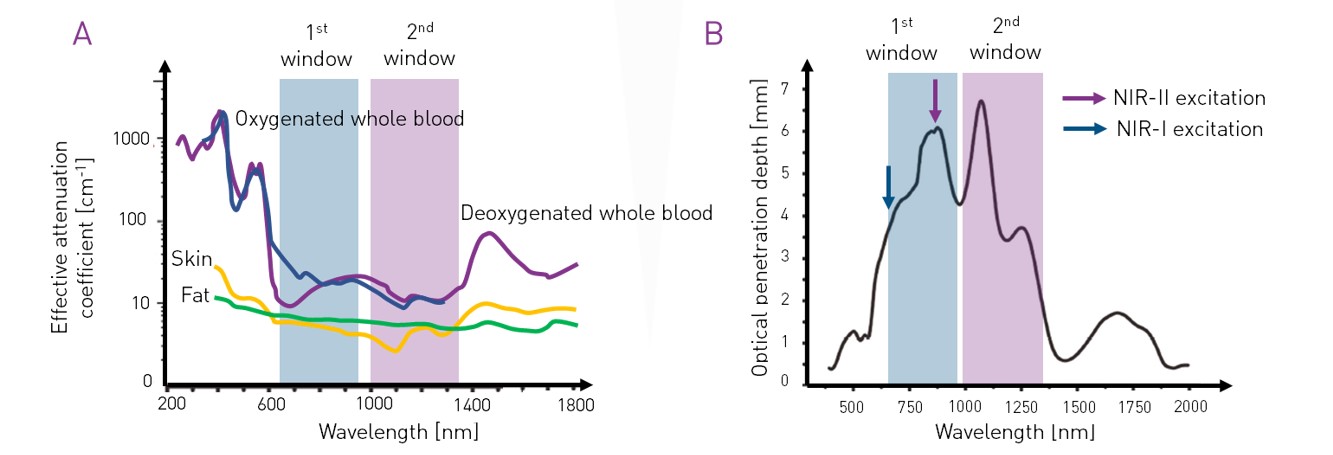
Figure 1 – (A) Optical windows in biological tissues. In the first and second infrared windows the absorption and scattering from blood and tissues are minimized, hence enabling light to penetrate more easily. (B) Penetration spectrum for imaging in the first and second windows, arrows point to the wavelengths typically used for excitation.
It has been shown that some of the contrast agents used in NIR-I imaging have an emission tail in the NIR-II range which can be exploited (Figure 2(B)). It is the case of IndoCyanine Green (ICG), a biocompatible and FDA approved contrast agent, commonly used for both NIR-I and NIR-II fluorescence imaging [6,7].
The Silicon-based cameras used for visible and NIR-I imaging are not sensitive in the NIR-II range (Figure 2(A)). Specific cameras usually based on InGaAs sensors and sensitive in the Short Wave InfraRed region (900 – 1700 nm) are required. C-RED 2, a 640×512 InGaAs camera developed by First Light Imaging, combines high sensitivity to high framerates in the NIR-II range, enabling sensitive dynamic imaging.
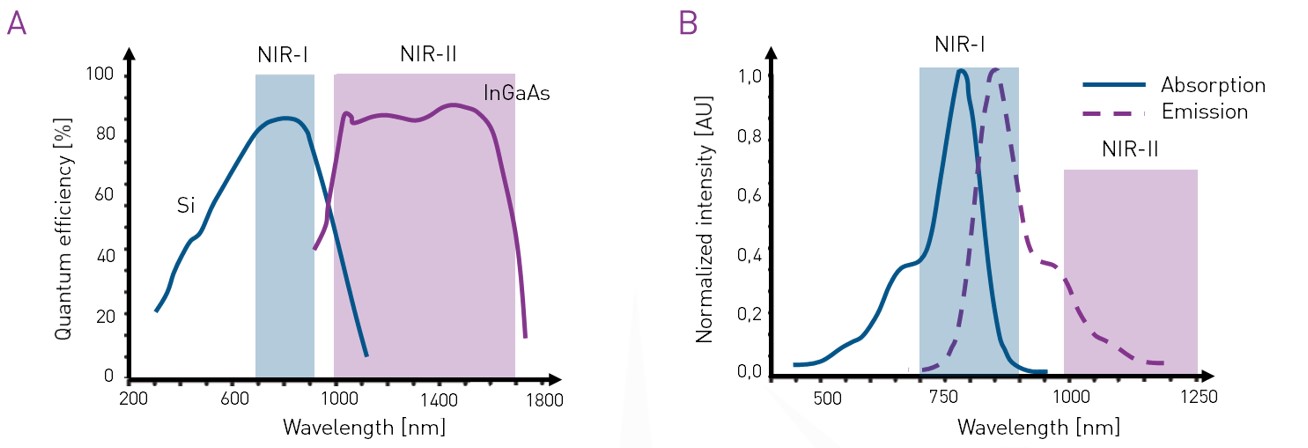
Figure 2 – (A) Sensitivity curves for typical cameras based on silicon (Si) and indium gallium arsenide (InGaAs) sensors. InGaAs based sensors are optimal for imaging in the second biological window. (B) IndoCyanine Green excitation and fluorescence emission spectrum.
Second biological window (NIR-II range) imaging yields high penetration depth and high spatial resolution.
Small animal imaging experiments mostly use similar experimental setups. The main elements are the stage for the specimen (mouse), a laser source for fluorescence excitation, and an imaging device including an objective, a set of emission filters and a camera to detect the emitted light. For the results presented hereafter, the C-RED 2 camera was installed in an existing SWIR imaging set-up. The excitation source is a 808 nm laser which provides an 120 mW/cm2 illumination. The emission filter is a high-pass SWIR window filter. The preclinical imaging device was set up by OPTIMAL Grenoble.
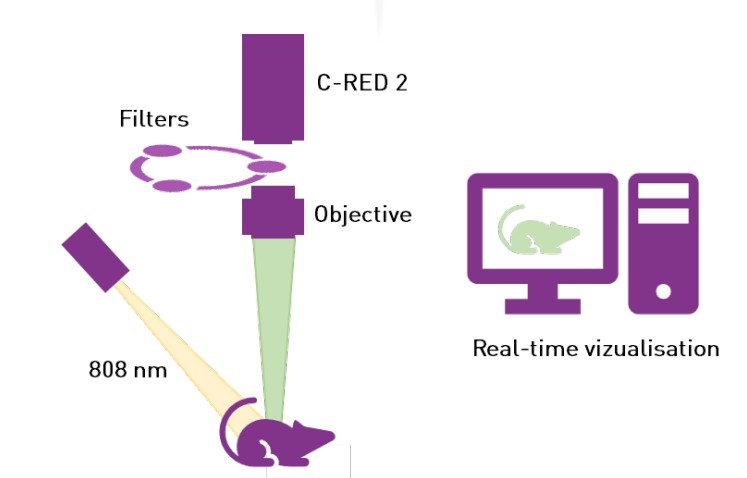
Figure 3 – Schematic representation of the imaging system used in the experiment.
A six-week old female nude mouse (Janvier Labs) was anesthetized and a tail intravenous injection of 500 µmol/L of ICG (Serb laboratory) was performed. A movie was acquired from t0 to t+40s post-injection. Then, a 15 minutes post-injection zoomed image of the ear was acquired as well as a time-lapse of the ICG biodistribution in the ear. The real-time in vivo imaging experiments were performed by OPTIMAL Grenoble.
In vivo NIR-II imaging the full body of the mouse after intravenous administration of ICG provides a map of ICG biodistribution across all organs. The hind limb vasculature, organs, vascular system and femoral vessel are clearly visible. Note the low autofluorescence and high contrast of the image. The following figure highlights some of the key organs. The acquisition parameters are: 10 ms integration time, 100 FPS, High gain, CDS mode. The contrast was inverted but no post-processing was applied
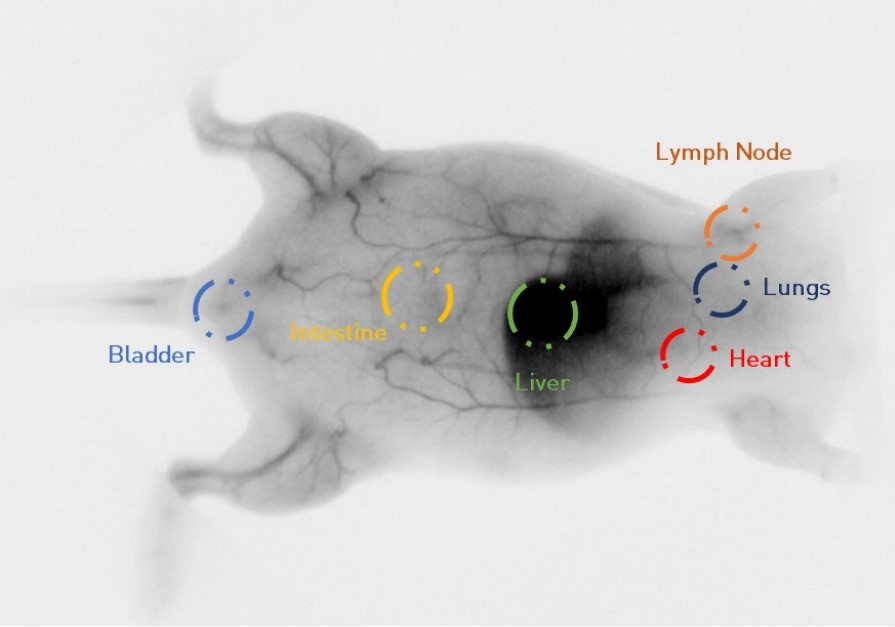
Figure 4 – Fluorescence in vivo imaging of a full mouse body in the NIR-II range. The vascular network can be seen with high contrast. Inverted and auto scaled contrast.
The spatial profile below (cf. Figure 5) plotted on the mouse belly highlights the systems’ performances in terms of contrast and resolution. The narrowness of the pics on the profile illustrates the high spatial resolution of the blood vessels, while the height of the pics illustrate the signal to background ratio.
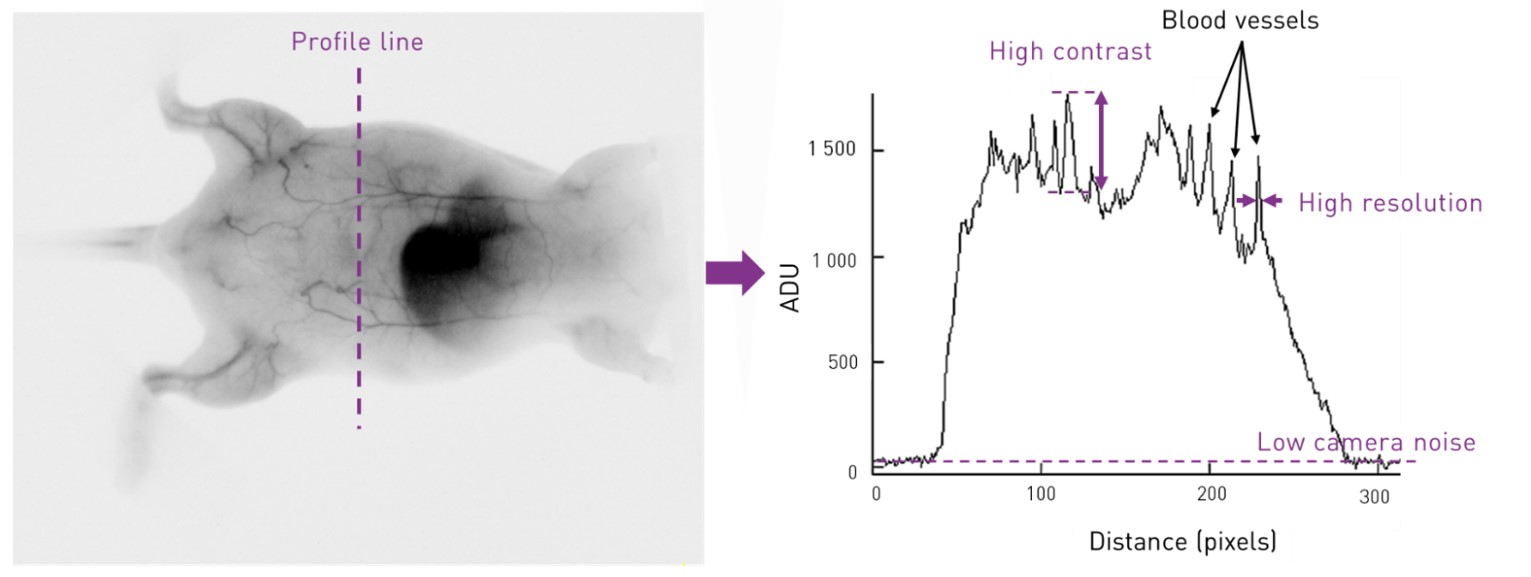
Figure 5 – NIR-II fluorescence image of a full mouse body (right) and cross-sectional fluorescence intensity profile along purple dashed line (left).
Using higher magnification lenses allows to get a more detailed view of specific regions of interest. Shown below is the example of ear vasculature. The acquisition parameters are: 500 ms integration time, 2 FPS, High gain, CDS mode. The contrast was inverted but no post-processing was applied. Note the high signal to noise and signal to background ratio that allow to visualize the cutaneous and sub-cutaneous blood vessels. In pharmaceutical applications, this will allow to non-invasively study the vascular response induced by allergenic materials, for example.
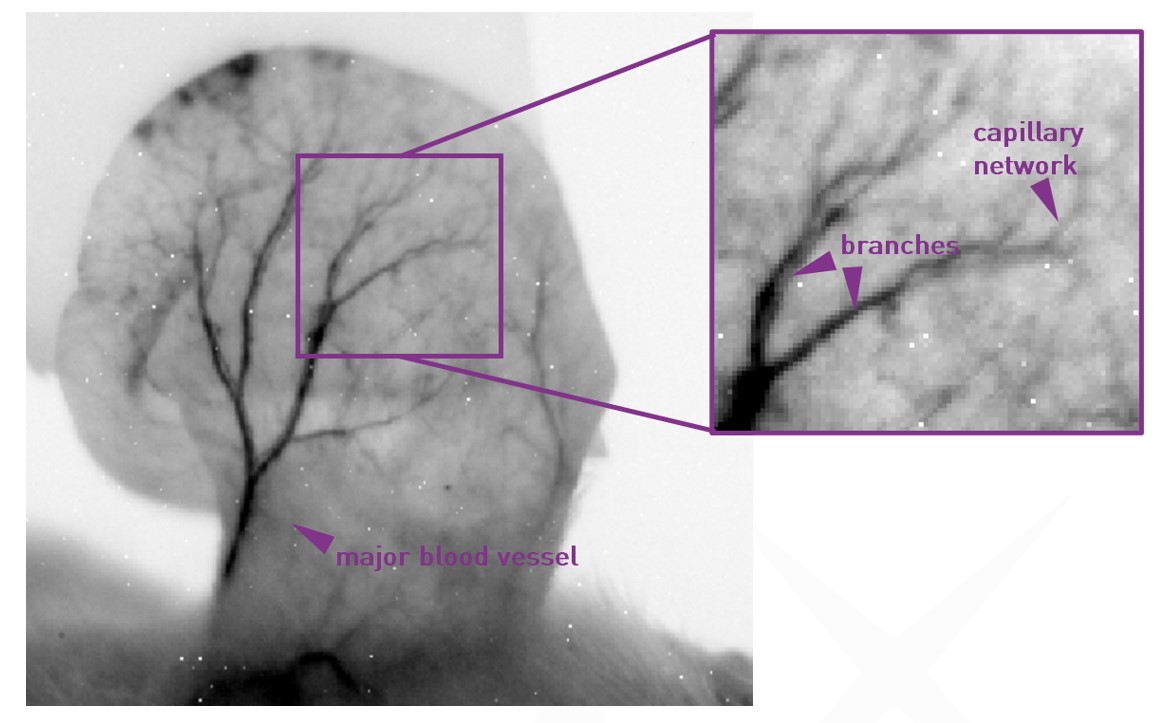
Figure 6 – Fluorescence in vivo imaging of external ear vasculature in the NIR-II range. Inverted contrast
A carefully designed imaging system optimizes both contrast and resolution. The gain and bias on-the-fly corrections available in C-RED 2 enable real-time visualization of high quality images. The biodistribution of fluorescence markers can be studied with accuracy.
The high sensitivity of C-RED 2 enables to detect weak fluorescence signals at low integration times. Hence, high framerates can be used. C-RED 2 is the fastest camera available on the InGaAs market in the NIR-II range, able to run at up to 600 FPS in full frame mode for less than 30 electrons readout noise. This results in an optimized temporal resolution and accurate dynamic imaging. The metabolism of the mouse can be monitored.
The First Light Vision GUI enables continuous acquisition of over 8 000 frames (with a standard computer), which can be saved in six different formats including .raw, .tiff, and .avi. The “Direct Record” option allows to save images on-the-fly and acquire even longer movies. Alternatively, the C-RED 2 camera can be interfaced with MatLab, LabView etc.
A nude mouse was injected with ICG and a 40 seconds movie was acquired in high gain mode, 5 ms integration time (200 FPS). To watch the full movie, please refer to First Light Imaging website.

Figure 7 – NIR-II fluorescence imaging of the biodistribution of ICG in a mouse after intravenous tail injection. Screenshots from a 40 seconds movie showing the diffusion of ICG. Color coded images, the color bar shows the fluorescence intensity in arbitrary units.
The accumulation of ICG in the liver can clearly be seen, as well as the contractions of the heart and lungs. The mouse full body vascularization becomes more contrasted as the agent diffuses.
10 minutes after the first injection, a second intravenous injection of ICG was performed and a second movie was acquired for 1 minute with a 50 ms integration time (20 FPS) in high gain mode. To watch the full movie, please refer to First Light Imaging website.

Figure 8 – NIR-II fluorescence imaging of the biodistribution of ICG in the ear after intravenous auricular injection. Screenshots from a 1 minute movie showing the diffusion of ICG. Color coded images, the color bar shows the fluorescence contrast in arbitrary units.
The ear micro-vascularization lightens up as ICG diffuses through the vessels.
The high sensitivity of C-RED 2 enables low integration times. The camera has the fastest framerate of the market (600 FPS full frame), allowing very high temporal resolution.
C-RED 2’s high sensitivity combined to high framerates enables to achieve high temporal resolution of the fluorescence signal. Biological parameters, such as vital signs (heart and respiration rates), contrast agent accumulations, metabolic rates, etc can be dynamically monitored in vivo and in real-time.
The fluorescence signal kinetics can be studied through temporal plots of fluorescence intensity in specific regions of interest (Figure 9). The ICG distribution in the different organs can be followed in time. Note how ICG accumulates in the liver. The precise evaluation of the dynamics further enables contact free and non-invasive measurements.
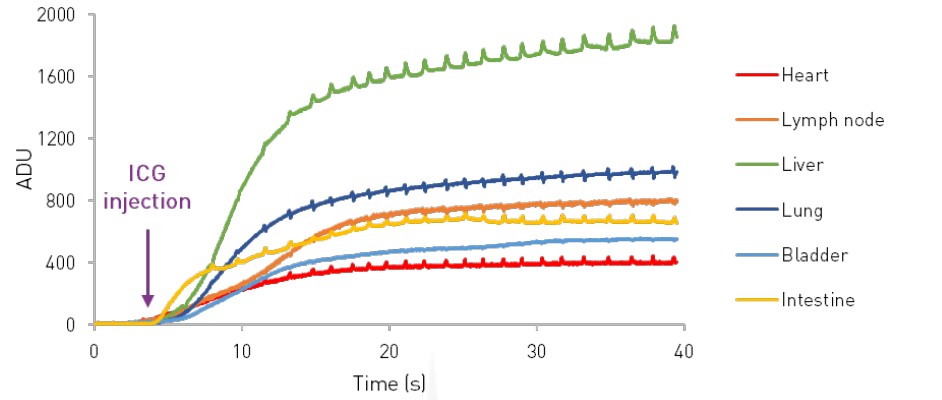
Figure 9 – Time monitoring of physiological parameters. 40 seconds time profiles of six regions of interest.
A time-lapse with 10 ms integration time (100 FPS) was acquired at 1 minute post-injection for 80 seconds. Biological patterns can be observed such as heart rate and respiration rate. The analysis can be made on the time plots (Figure 10) or on Fourier transforms. The mouse respiration rate (1.03 breaths per second) and the mouse heart rate (7.6 beats per seconds) can be computed. These values are consistent with the literature.

Figure 10 – Time monitoring of physiological parameters. 5 seconds time profiles over two regions of interest. Time is given in seconds post-injection.
Note how the fluorescence intensity in other regions of interests are synchronized to the respiration rate.
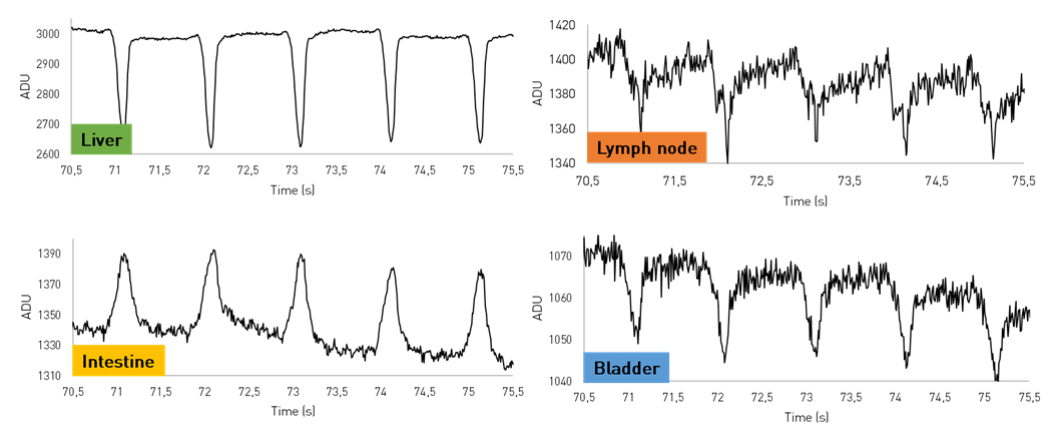
Figure 11 – Time monitoring of physiological parameters. 5 seconds time profiles over four regions of interest. Time is given in seconds post-injection.
C-RED 2 enables to perform quantitative time-lapse analysis of biological parameters.
C-RED 2 is a plug-and-play camera. Our C-RED range of cameras offers hardware optimization of images to adjust to your specific use case.
Visualization of the microvascular systems in vivo and in real time improves our understanding of the circulatory system (vascular anatomy, blood flow, etc) and the associated pathologies. Monitoring physiological parameters such as heart rate and breath rate non-invasively and with high temporal accuracy is also possible. These are some of the multiple applications of biomedical NIR-II imaging, which also include visualizing tumors, drug development, etc.
The full experiment with C-RED 2 described in this note illustrates its performances for small animal imaging. High contrast imaging of the vascularization system of the mouse through intact skin could be performed. Additionally, movies with high temporal resolution showed that we were able to precisely map biological dynamics.
C-RED 2 is a state of the art camera designed for high demanding short wave infrared applications. C-RED 2 is versatile and enables high quality sensing at both long exposure times and at extremely fast framerates (up to 600 FPS) and short integration times. Thanks to this, C-RED 2 is very flexible and perfectly suited for small animal imaging.

First Light Imaging acknowledges Optimal Grenoble for assembling the preclinical imaging device and performing the in vivo experiments.
Date: July 2020
Author: Cecile Brun
Category: Application Note
